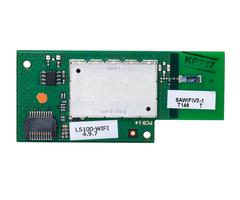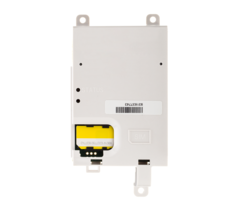How do I stop a Honeywell LYNX Touch from boot looping?
So your LYNX Touch L5100, L5200 or L7000 security system is stuck in a boot loop? Generally, this is not a hardware issue or a "bad" LYNX Touch alarm system. We support and monitor enough LYNX Touches that we now know that this is normally a software issue that is causing your system to boot loop. A boot loop is a series of repeating reboot cycles caused by a glitch that continues to repeat itself. It is directly associated with the L5100-WIFI internet communication module trying to establish a network connection before it boots up fully. If this connection can't be established, the system will reboot and try again. If it still can't join, you can end up in a frustrating boot loop where you can't get the system to power up at all with the WIFI module installed. If you have this issue, simply power the system down and remove the WIFI and you can see if your boot loops are IP issues as if they are, the system will boot up normally with the WIFI removed.
We have drawn a strong correlation to managed networks that use static (fixed) IP addresses and people that report the boot loop issue. So we recommend always configuring the panel as DHCP (dynamically assigned IP addressing), instead of Static IP. When managing your network, you can either assign a Static IP to a device so it stays on that IP address or you can setup a reserved DHCP address in your network and let the device handle changing addresses as needed. Since both setups accomplish the same thing (making sure that a device has a valid IP address to communicate on, without causing WIFI connectivity issues or IP conflicts), we urge everyone to use DHCP as the panel side. If you program your system for a Static IP and either put in a wrong IP address, Subnet Mask, Gateway IP or DNS Server IP, or if somehow the network settings that make those addresses valid changes, the panel will try and join to the IPs programmed in the panel for Static IP and because it can't connect, it will crash and try again putting you into the boot loop sequence. The problem with the boot loop issue is that the setting that is causing it, is only accessible with the WIFI module installed. Therefore, once the boot loops start, you are in a tough situation. The WIFI module needs to be installed to change from Static IP back to DHCP but when the WIFI module is installed, the panel boot loops.
The only way to solve this issue is to default the communicator settings on the panel. However you will not have access to the comm settings without a valid communicator installed. Since your WIFI unit is already boot looping, you will need to remove the WIFI module and install a GSM unit. You have two options: the Honeywell GSMVLP5-4G or the Honewell 3GL. The 3GL is a more cost effective and popular option. After you have powered down and remove the WIFI, we will need to install the GSM unit. Once the GSM is installed, we can power up the system. You should notice that the system will boot up properly. If it continues to boot loop without the WIFI module contact the seller of the equipment.
After you boot up the system with the GSM only, we need to factory reset the communications on the panel. Do the following: Security > More > Tools > Enter your installer code > Program > Comm Diagnostics > Down Key > Setup Communication > Factory Defaults. This will reset the communicator settings and solve the boot looping issue. It will not clear out any other programming such as zones or anything besides the communicator settings.
After the comm settings are reset, you can power down again and install the WIFI module. Then power up again. The system should no longer boot loop. If it does then contact the seller and discuss the possibility of warranty replacement. Assuming the panel is now powering up properly with the WIFI on board, you can now choose to go back to WIFI only monitoring or setup a dual path system. A dual path system is far more reliable since the cellular communicator will send signals over the AT&T network if the internet connection ever fails. We offer no contract monitoring options for both setup with free tech support and remote programming.
Did you find this answer useful?
We offer alarm monitoring as low as $10 / month
Click Here to Learn MoreRelated Products


Related Categories
- Answered
- Answered By
- Frank Longo
